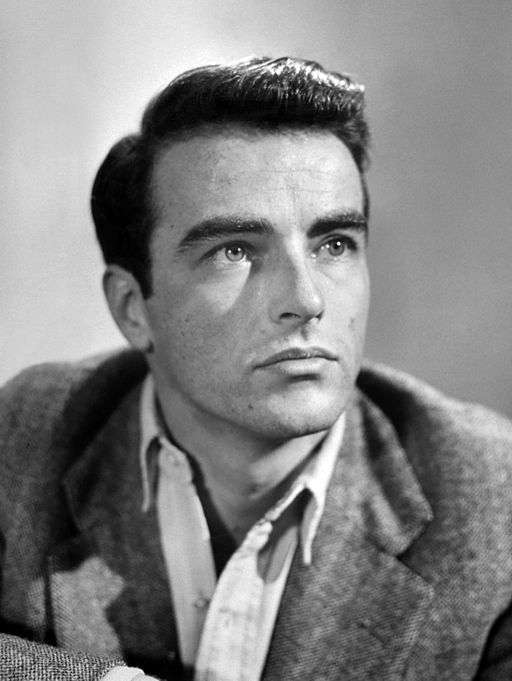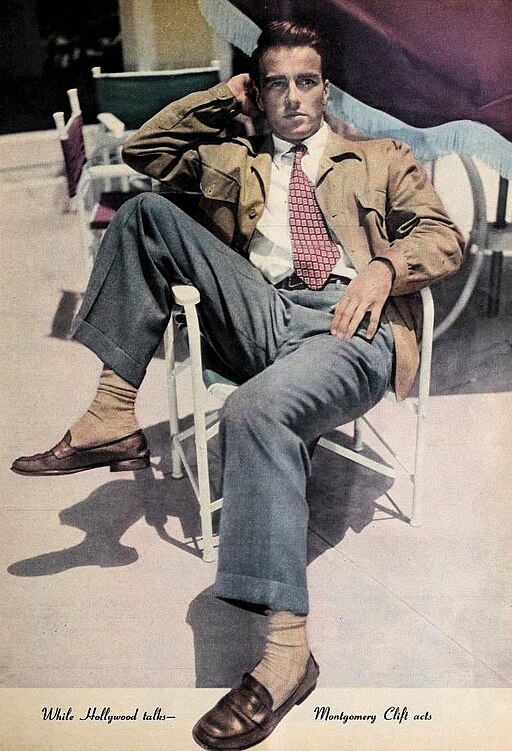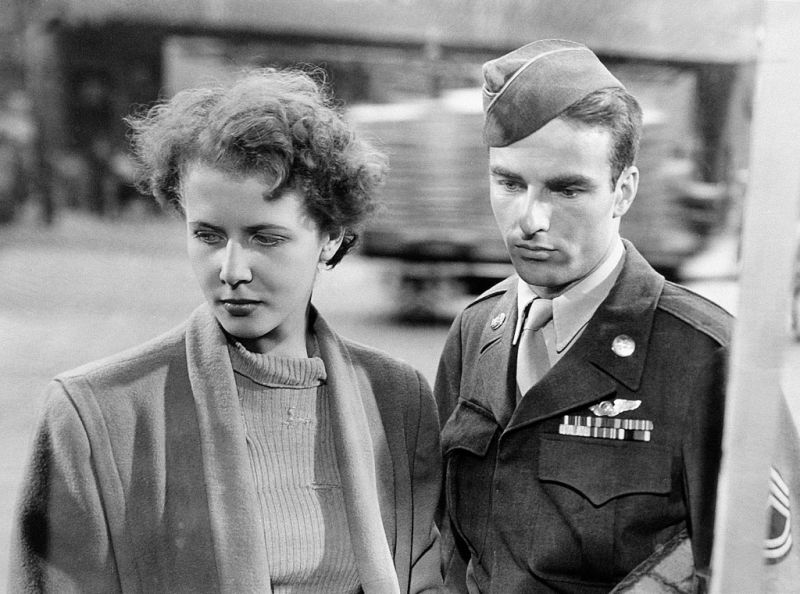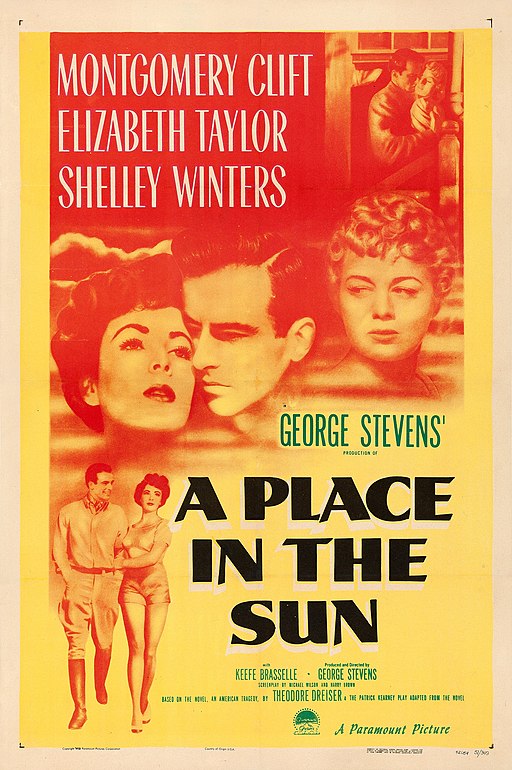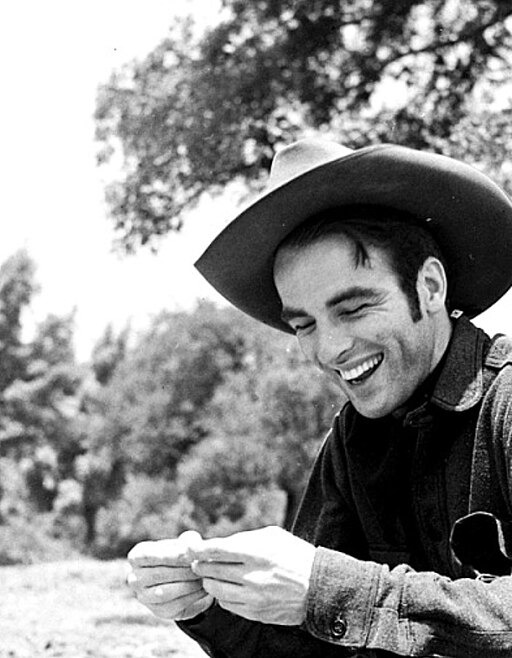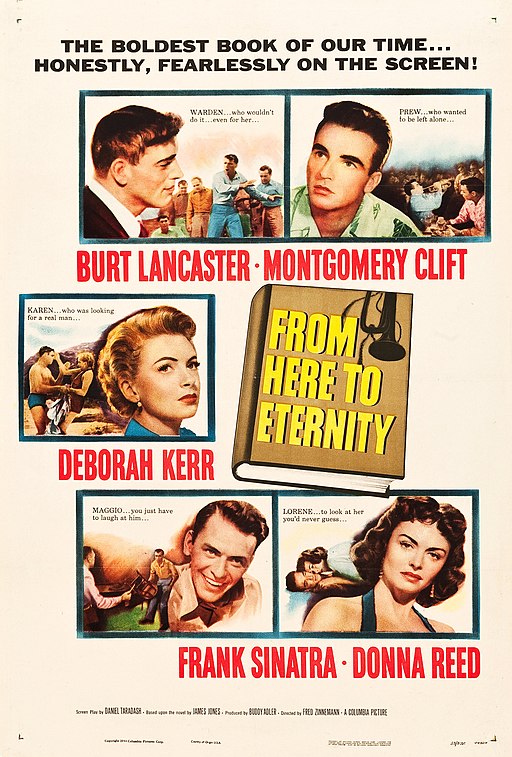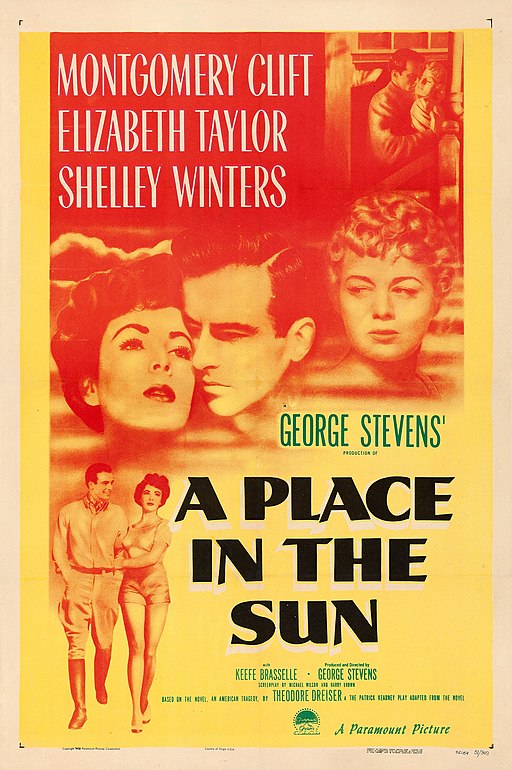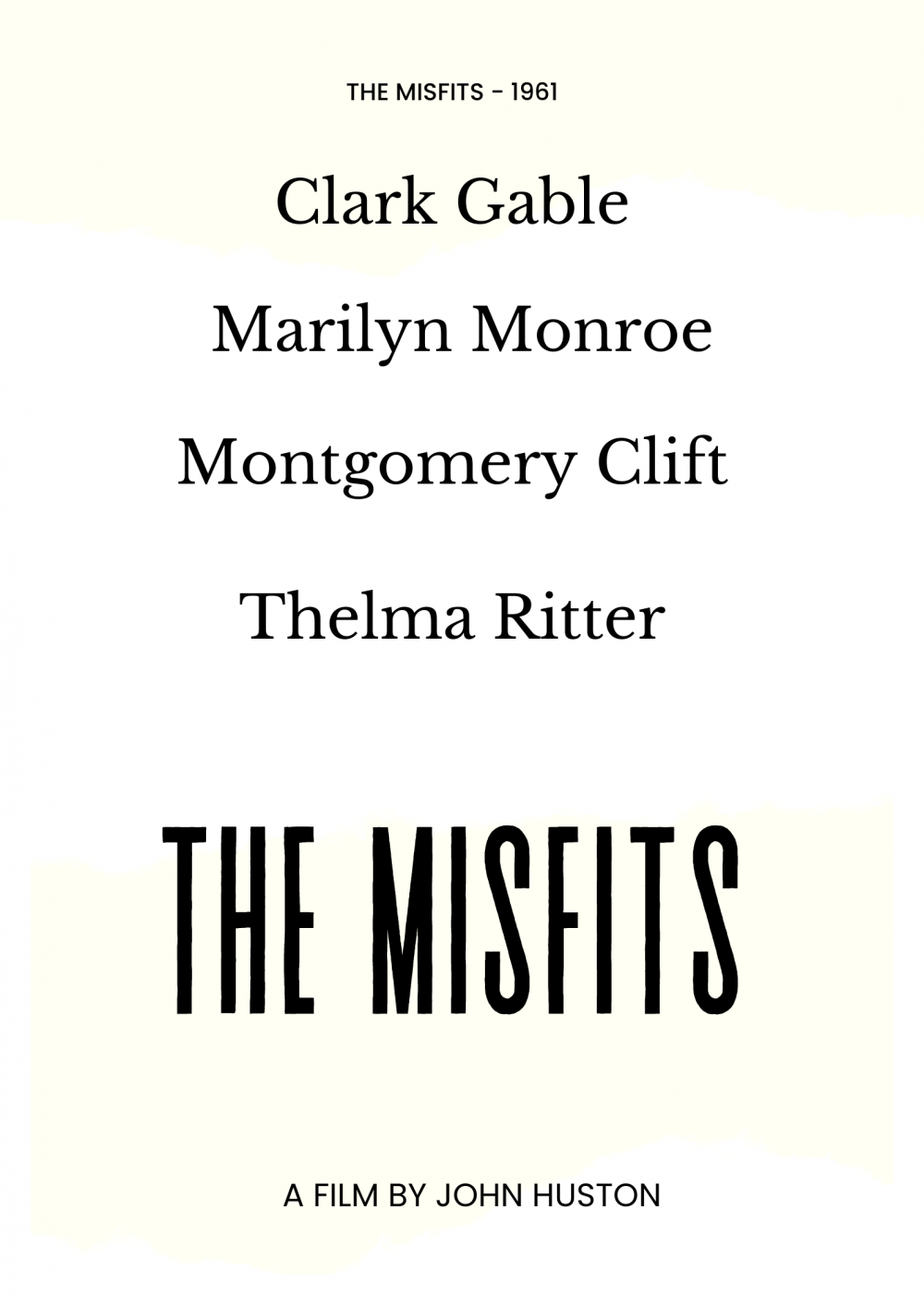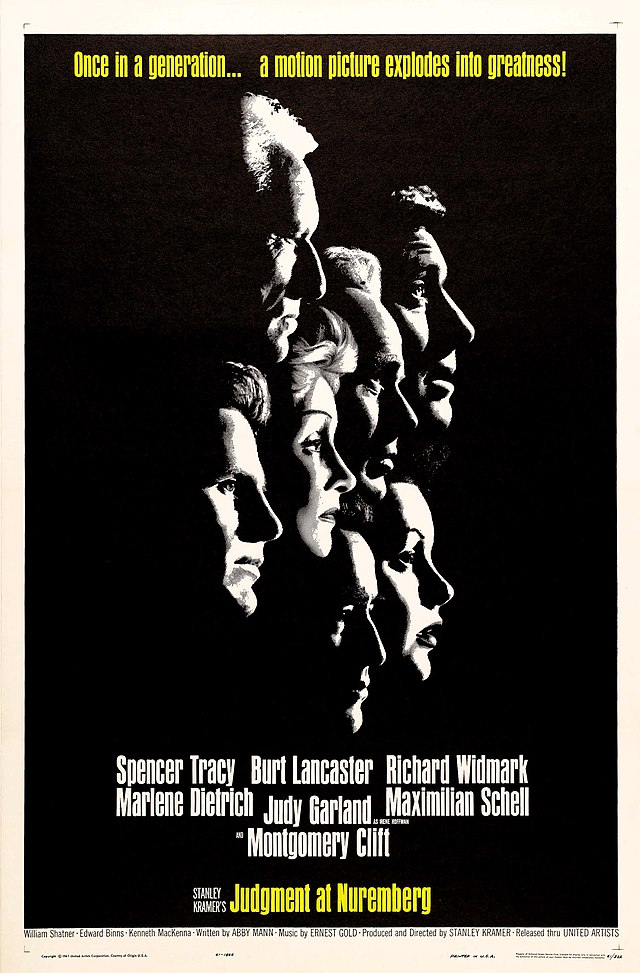Montgomery Clift
back| Full Name | Edward Montgomery Clift |
| Stage Name | Montgomery Clift |
| Born | October 17, 1920 |
| Birthplace | Omaha, Nebraska, U.S. |
| Died | July 23, 1966 |
| Buried | Friends Cemetery, Prospect Park, Brooklyn, New York, U.S. |
| Married to | Never married |
| Children | None |
| Notable films | Red River - A Place in the Sun - From Here to Eternity - Th Misfits |
Montgomery Clift – The magnetic “Monty” of classic movies
Montgomery Clift, born Edward Montgomery Clift on October 17, 1920, in Omaha, Nebraska, was a distinguished American actor renowned for his intense performances and deep involvement in the method acting movement. Monty, as he was affectionately called, commenced his acting career on Broadway before transitioning to Hollywood, swiftly establishing himself as a leading man.
In his debut film, "Red River" (1948), Clift's compelling performance set the tone for his future success. He garnered four Academy Award nominations, showcasing his versatility in roles across genres—from the romantic tragedy of "A Place in the Sun" (1951) to the wartime drama of "From Here to Eternity" (1953).
Clift's personal life was marked by struggles, facing the pressures of Hollywood's expectations while grappling with his sexuality at a time of widespread prejudice. A severe car accident in 1956 drastically affected his appearance and emotional well-being, leading to a dependence on alcohol and prescription drugs.
Montgomery Clift was often referred to by his friends and colleagues as "Monty." This nickname encapsulates a sense of familiarity and affection, reflecting his close relationships within the film industry.
Related
Montgomery Clift – Biography, analysis, awards and all his movies
Montgomery Clift was an American actor renowned for his intense performances and dedication to his craft. Born in Omaha, Nebraska, in 1920, Clift was destined for a life on stage and screen. His family moved to New York when he was young, and he made his Broadway debut at the age of 15. Clift moved to Hollywood in the late 1940s, where he quickly established himself as a leading man.
In 1948, Clift starred in "Red River" alongside John Wayne, showcasing his ability to hold his own with cinema's biggest stars. His performance in "A Place in the Sun" alongside Elizabeth Taylor in 1951 solidified his place in Hollywood, earning him his second Academy Award nomination.
Clift was known for his method acting and commitment to realism in his performances. He worked closely with directors and was meticulous about his roles, often delving deep into the psychology of his characters. His dedication to his craft earned him a reputation as one of the finest actors of his generation.
Car accident in 1956
The car accident that Montgomery Clift experienced occurred on the night of May 12, 1956. After attending a dinner party at the home of his close friend and co-star Elizabeth Taylor, Clift crashed his car into a telephone pole while driving down a steep and winding road in Beverly Hills.
Elizabeth Taylor, along with her husband at the time, Michael Wilding, and friend Kevin McCarthy, rushed to the scene after hearing the crash. Taylor is often credited with saving Clift’s life; she reached into his mouth and removed two teeth that had been knocked loose and were obstructing his breathing.
Clift suffered severe injuries in the accident, including a broken jaw and nose, and facial lacerations. His face had to be reconstructed through plastic surgery, which altered his appearance significantly. The left side of his face was left partially paralyzed, and for the rest of his life, he experienced pain, discomfort, and health issues related to the accident.
The impact of the crash on Clift's career and personal life was profound. He had been in the middle of filming "Raintree County" at the time of the accident, and the production was put on hold for months to allow him to recover. When filming resumed, the change in Clift’s appearance was noticeable, and the filmmakers had to adjust lighting and camera angles to minimize the effects of his injuries.
Beyond the physical effects, the accident also took a toll on Clift’s emotional and mental well-being. He became increasingly dependent on alcohol and prescription drugs to manage his pain and anxiety, which affected his behavior on and off set. His acting career, once promising and on the rise, saw a decline, and he struggled to secure major roles in the years that followed.
Despite these challenges, Clift continued to deliver powerful performances in films like "A Place in the Sun" and "Judgment at Nuremberg," showcasing his resilience and commitment to his craft. However, his health continued to deteriorate, and he passed away in 1966 at the age of 45, his life and career cut tragically short. The car accident remains a pivotal moment in Clift’s story, marking a before and after in his life, and it is widely considered to be a turning point that profoundly affected the trajectory of his career and personal life.
Last years and death
Montgomery Clift passed away on July 23, 1966, at the age of 45. He was found dead in his townhouse at 217 East 61st Street in New York City. His body was discovered by his private nurse, Lorenzo James, who had been living with him.
The official cause of death was listed as a heart attack, but there has been much speculation and discussion about the factors that may have contributed to his early demise. Clift had a history of health issues, including chronic pain and respiratory problems, which were exacerbated by his dependence on alcohol and prescription drugs. He had also struggled with mental health issues throughout his life.
In the years leading up to his death, Clift's health had visibly deteriorated. He had become increasingly reclusive and was known to engage in self-destructive behavior. His acting career had also suffered; although he continued to work in films and on stage, he was no longer receiving the same level of acclaim or as many offers for leading roles as he had earlier in his career.
His lifestyle and the physical and emotional toll of his 1956 car accident have been widely cited as contributing factors to his early death. However, there were also reports that Clift had been making an effort to turn his life around at the time of his passing, seeking treatment for his addictions and working to get back in shape.
Montgomery Clift was buried at the Friends Cemetery, Prospect Park, Brooklyn, New York City. His death marked the end of an era in Hollywood, as he was one of the last great stars of the Golden Age of cinema. Despite his troubled life, Clift left behind a legacy of outstanding performances and is remembered as one of the most talented and enigmatic actors of his generation.
Speculations about Montgomery Clift being gay
Many biographers, friends, and colleagues have postulated that Clift was gay or bisexual. Despite the rumors and speculations, Clift was known to be intensely private about his personal life, and he did not publicly discuss his sexual orientation. In the days of Montgomery Clift’s career being gay as an actor playing typically masculine roles was an issue often discussed. Other times of course.
Several aspects of his life have fueled these speculations:
- Close Relationships with Men: Clift had close relationships with several men throughout his life, including actors and other individuals in the entertainment industry. These relationships were sometimes interpreted as romantic or sexual, though definitive evidence is scarce.
- Lack of Public Romantic Relationships with Women: Clift was not publicly known to have had many romantic relationships with women, which has fueled speculation about his sexuality.
- Era of Repression: Clift's peak in Hollywood occurred during a time when being openly gay was not accepted and could have seriously damaged an actor's career. As a result, if Clift was gay or bisexual, he would have had strong incentives to keep his sexual orientation private.
- Posthumous Accounts: After Clift's death, some individuals close to him, including friends and biographers, have spoken about his sexuality, suggesting that he was gay or bisexual. However, these accounts vary, and some are based on hearsay or personal interpretation.
While there is a substantial amount of speculation and circumstantial evidence, it is important to note that Montgomery Clift himself never publicly confirmed any details about his sexual orientation.
Relationship with Elizabeth Taylor
Montgomery Clift and Elizabeth Taylor shared a deep and enduring friendship that lasted until Clift’s death in 1966. They first met on the set of "A Place in the Sun" in 1951, and their on-screen chemistry translated into a close off-screen bond.
Nature of Their Relationship:
- Platonic and Supportive: Despite rumors and speculations, their relationship was platonic. Taylor was one of Clift’s closest friends and a major source of emotional support throughout his turbulent life.
- Protective: Elizabeth Taylor was known to be fiercely protective of Clift. She looked out for him, especially as he struggled with his personal demons, including substance abuse.
Key Moments:
- Saving His Life: One of the most famous stories about their friendship occurred in 1956 when Clift was involved in a serious car accident after leaving a party at Taylor’s house. Taylor rushed to the scene, found Clift unconscious, and reportedly saved his life by removing a broken tooth from his throat, which was obstructing his breathing.
- Continued Support: Taylor continued to support Clift in his career and personal life, even as he faced increasing challenges related to his health, substance abuse, and the effects of the car accident on his appearance.
- Advocacy: Elizabeth Taylor was known to advocate for Clift, both in terms of helping him secure film roles and in supporting him during his recovery from the car accident.
Impact on Their Careers:
- On-Screen Chemistry: Their on-screen partnerships, in films such as "A Place in the Sun" and "Suddenly, Last Summer," are remembered for their intense emotional depth and chemistry, showcasing both actors’ talents.
- Mutual Respect: Both actors had great respect for each other’s craft, and their friendship helped them navigate the pressures of Hollywood.
Personal Significance:
- Enduring Friendship: Their friendship lasted for 15 years, until Clift’s death, and is often cited as one of the most significant relationships in both of their lives.
- Support in Difficult Times: Clift’s life was marred by personal struggles, and Taylor’s unwavering support was a constant in his life.
Remarkable quotes from Montgomery Clift:
- On Acting: “The closer we come to the negative, to death, the more we blossom.”
- On Hollywood: “Hollywood is an overcrowded brothel.”
- On His Career: “I’ve had an experience that I would trade for nothing in the world, and I’ve seen something of life, and I’ve lived more intensely in the past five years than someone else might in a lifetime.”
- On Perseverance: “Failure and its accompanying misery is for the artist his most vital source of creative energy.”
- On Authenticity: “To my way of thinking, an actor's course is set even before he's out of the cradle.”
- On Typecasting: “I don’t want to be a ‘star.’ There are no more stars left, and I don’t like the way the public confuses what happens when cameras are rolling with what’s supposed to have happened once they stop; it’s really all supposed to stop once the cameras stop rolling.”
- On Success: “The only line that’s wrong in Shakespeare is ‘holding a mirror up to nature.’ You hold a magnifying glass up to nature. As an actor, you just enlarge, and you know what’s too far because you feel it’s too far.”
Analysis of acting style of Montgomery Clift:
Montgomery Clift was renowned for his intense and sensitive acting style, making him a standout performer during the mid-20th century and a key figure in the emergence of method acting.
Intensity and Vulnerability
Clift was known for his ability to convey deep emotions and vulnerability on screen. His characters often grappled with inner turmoil, and he portrayed these struggles with a raw intensity that captivated audiences. His performances in “A Place in the Sun” and “From Here to Eternity” exemplify this emotional depth.
Authenticity and Naturalism
Clift’s acting was grounded in realism. He strived for authenticity in his roles, bringing a sense of naturalism that was somewhat uncommon in the Golden Age of Hollywood. He was meticulous about understanding his characters’ backgrounds and motivations, which contributed to the believability of his performances.
Physicality
Clift’s physicality was an integral part of his acting style. He was highly expressive, using his body language and facial expressions to convey his characters’ emotions and thoughts. This physicality was especially noticeable in roles that demanded a transformation, such as his portrayal of a mentally disturbed man in “Freud: The Secret Passion.”
Collaboration
Clift was known for being a collaborative actor, working closely with directors and fellow actors to enhance his performances. He was deeply involved in the creative process, often contributing to the development of his characters and the overall direction of the films.
Complexity
Montgomery Clift often chose complex, multi-dimensional roles. His characters were never one-dimensional; they were flawed, conflicted, and layered. This complexity allowed Clift to showcase his range as an actor and add depth to his performances.
Method Acting
Clift was one of the early practitioners of method acting in Hollywood, a style that involves deeply immersing oneself in the character to deliver a more authentic performance. He was known for his dedication to his roles, often going to great lengths to understand and embody the characters he played.
Analysis of his role as Private Prewitt in “From Here to Eternity”
Montgomery Clift's role in "From Here to Eternity" (1953) is widely regarded as one of his most significant and memorable performances. He portrayed Private Robert E. Lee "Prew" Prewitt, a former boxer who joins an Army unit stationed in Hawaii just before the attack on Pearl Harbor.
Character Overview: Prewitt is a complex character, filled with internal conflicts and a strong sense of integrity. He refuses to join the company’s boxing team due to a tragic incident in his past where he blinded a sparring partner. His decision leads to harsh treatment from his superiors and fellow soldiers, trying to break him down and force him into the boxing ring. Prewitt remains steadfast, showcasing Clift’s ability to portray vulnerability, determination, and emotional depth.
Acting Style and Reception: Montgomery Clift’s performance in the film is a prime example of his method acting technique. He immersed himself in the character, bringing a level of authenticity and intensity that was rare at the time. His ability to convey the emotional turmoil and moral strength of Prewitt resonated with audiences and critics alike.
Clift’s nuanced performance earned him an Academy Award nomination for Best Actor. His interactions with other characters in the film, particularly his close friendship with Angelo Maggio (played by Frank Sinatra) and his romantic relationship with Lorene (played by Donna Reed), highlight Clift's capacity for creating believable and compelling on-screen connections.
Legacy: Montgomery Clift’s role in "From Here to Eternity" solidified his status as one of the most talented and influential actors of his generation. His commitment to the character and his method acting technique left a lasting impact on the film industry, inspiring future generations of actors. The film itself went on to win eight Academy Awards, including Best Picture, and remains a classic of American cinema, with Clift’s performance standing out as a defining element of its enduring legacy.
Awards and nominations:
Academy Awards (Oscars):
- 1949: Nominated for Best Actor in a Leading Role – "The Search"
- 1952: Nominated for Best Actor in a Leading Role – "A Place in the Sun"
- 1954: Nominated for Best Actor in a Leading Role – "From Here to Eternity"
- 1962: Nominated for Best Actor in a Supporting Role – "Judgment at Nuremberg"
BAFTA Awards:
- 1954: Nominated for Best Foreign Actor – "From Here to Eternity"
- 1962: Nominated for Best Foreign Actor – "Judgment at Nuremberg"
Cannes Film Festival:
- 1953: Best Actor Award – "The Young Lions" (Shared with Paul Newman and Tony Curtis)
New York Film Critics Circle Awards:
- 1951: Best Actor Award – "A Place in the Sun"
Venice Film Festival:
- 1948: Volpi Cup for Best Actor – "The Search"
Notable movies featuring Mobtgomery Clift:
1948
- Red River: Clift plays Matthew Garth, an adopted son of a cattle rancher, portraying his journey of maturation and quest for independence, set against the backdrop of a perilous cattle drive.
1949
- The Heiress: Clift takes on the role of Morris Townsend, a charming suitor whose intentions are questioned when he courts a wealthy but plain-looking woman, Catherine Sloper (Olivia de Havilland).
1950
- The Big Lift: In this post-WWII drama, Clift plays Danny MacCullough, a sergeant in the U.S. Air Force involved in the Berlin Airlift, showcasing the emotional turmoil of the time.
1951
- A Place in the Sun: Clift delivers a stellar performance as George Eastman, a young man climbing the social ladder, who finds himself torn between his love for a co-worker (Shelley Winters) and his desire for a richer, more glamorous life with a socialite (Elizabeth Taylor).
1953
- From Here to Eternity: In this military drama set on the eve of the Pearl Harbor attack, Clift plays Private Robert E. Lee Prewitt, a soldier dealing with the harsh realities of army life.
1957
- Raintree County: Clift portrays John Wickliff Shawnessy, a man caught in the turmoil of the American Civil War, exploring themes of love, idealism, and personal growth.
1958
- The Young Lions: Clift plays Noah Ackerman, a Jewish American soldier facing anti-Semitism during World War II, in this war drama that explores the lives of soldiers on different sides of the conflict.
1959
- Suddenly, Last Summer: In this psychological drama, Clift is Dr. John Cukrowicz, a surgeon investigating the mysterious circumstances surrounding a young woman’s mental breakdown.
1960
- Wild River: Clift takes on the role of Chuck Glover, a government agent tasked with convincing an elderly woman to leave her island home, delving into themes of progress, tradition, and human connection.
1961
- The Misfits: In this modern Western drama, Clift plays Perce Howland, a young cowboy navigating the complexities of life, love, and friendship in the changing American West.
1962
- Freud: The Secret Passion: Clift delivers a compelling portrayal of Sigmund Freud, diving into the pioneering psychoanalyst’s struggles and breakthroughs in understanding the human mind.
1966
- Judgment at Nuremberg: In his final film, Clift plays Rudolph Petersen, a victim of Nazi sterilization policies, in this powerful courtroom drama centered on post-WWII war crimes trials.
Full list of Montgomery Clift movies per year:
1948
- Red River
1949
- The Search
- The Heiress
1950
- The Big Lift
1951
- A Place in the Sun
1953
- I Confess
- From Here to Eternity
1957
- Raintree County
1958
- The Young Lions
1959
- Suddenly, Last Summer
1960
- Wild River
1961
- The Misfits
1962
- Freud: The Secret Passion
1966
- Judgment at Nuremberg

